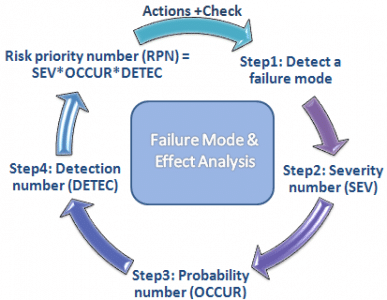FMEA Project X Who doesn’t remember the dramatic images….
Who does not remember the dramatic images of Project X, the birthday party in Haren, Groningen, that went completely out of control? Far too many young people came with the wrong intentions to accept a careless invitation. The result is known….
Unfortunately, many DFMEAs also have something akin to this party. Without properly identifying and recording what are actually the requirements for the design, the FMEA is started. The scope of the FMEA still remains somewhat vague and the question of which functions are actually the most important and therefore need to be analyzed is not considered so that simply everything ends up in the FMEA. The result is a huge FMEA that does little or nothing to improve the design or process but causes a lot of frustration for the engineers on the FMEA team. Not surprisingly, these engineers may have little enthusiasm for the next FMEA….

How can we prevent this?
First, it is important that the FMEA be done for the right reason: namely, because you are genuinely interested in finding out what the biggest risks of your design or process are and how to prevent future problems with them. If the FMEA is done just so that it can be checked off on a list, then every hour put into it is just a cost that will yield nothing.
The next major gainer is preparation. It is tempting to start the FMEA right away because it makes you feel like you are getting to the goal faster. Nothing could be further from the truth, however, due to a lack of focus and direction you will get lost in your own FMEA and end up taking much more time to complete it. Not to mention the results….
Before you start preparing the FMEA, the following things should be clear at a minimum:
- What are the customer/market requirements and what measurable design parameters go with them? Which ones are the most important?
- What design concept are we going to analyze?
- What are the component functions and which are the most important?
- What are the relevant interaction features in the design concept?
To surface all of this, tools such as QFD, Block-Boundary Diagram, Interface Matrix and Parameter Diagram are indispensable.
Third, there is much to be gained by employing an experienced moderator. This one maintains an overview throughout the process and thus helps the team stay focused on relevant issues. The ideal moderator knows a lot about FMEA methodology and preferably not so much about the subject of the FMEA. When it does, it will be very difficult for him to stay out of substantive discussions and remain in his role as moderator. Moreover, an experienced moderator can provide many more big and small tips that will make the FMEA process go faster and better, thus quickly recouping the commitment of this additional team member!
Update May 2019: the new FMEA standard is known and final! Read more about the changes, impact and training to fully informed adoption of the new standard here.
Latest news/blogs
Join our Orange action
From ISO 9001 to IATF 16949As consultants with expertise in ISO 9001 quality management systems,...
From ISO 9001 to IATF 16949
From ISO 9001 to IATF 16949As consultants with expertise in ISO 9001 quality management systems,...
Improving focus: Initial results from our survey
Improvement in focus: Initial results from our research Every year, organizations invest hundreds...


